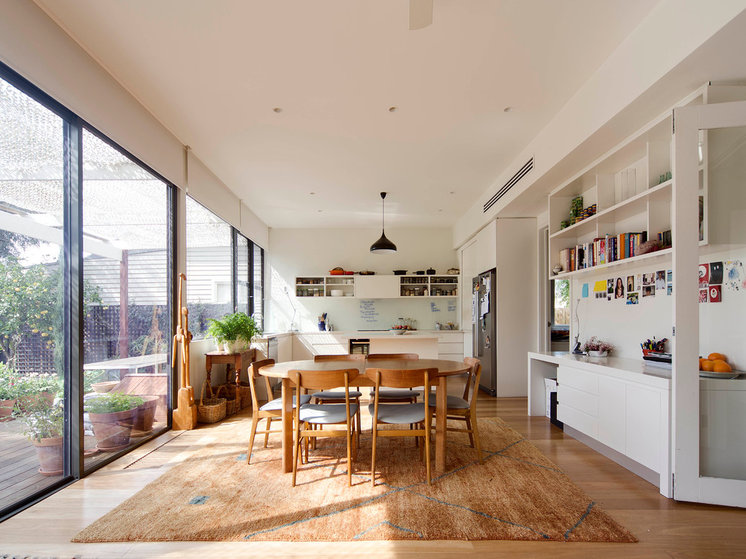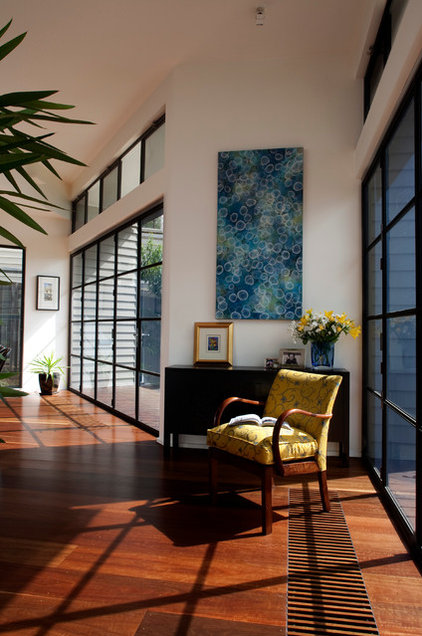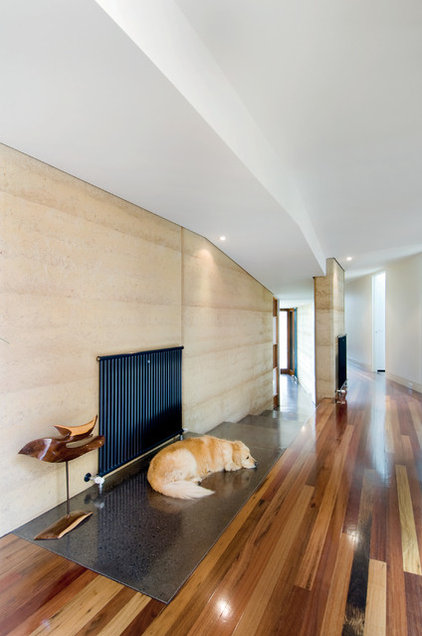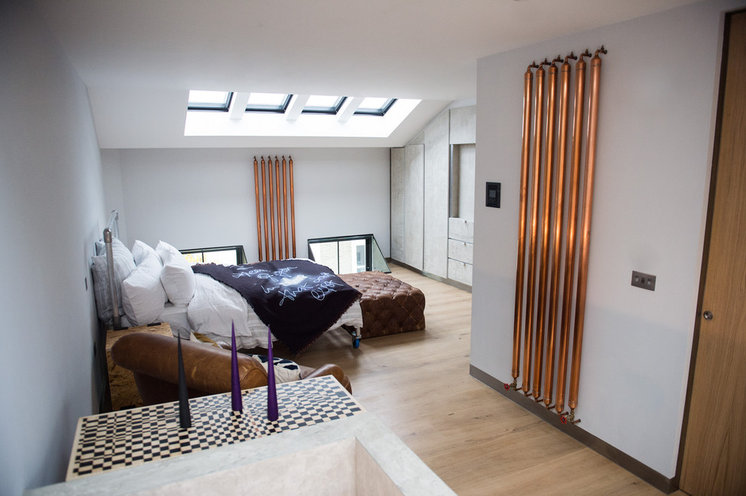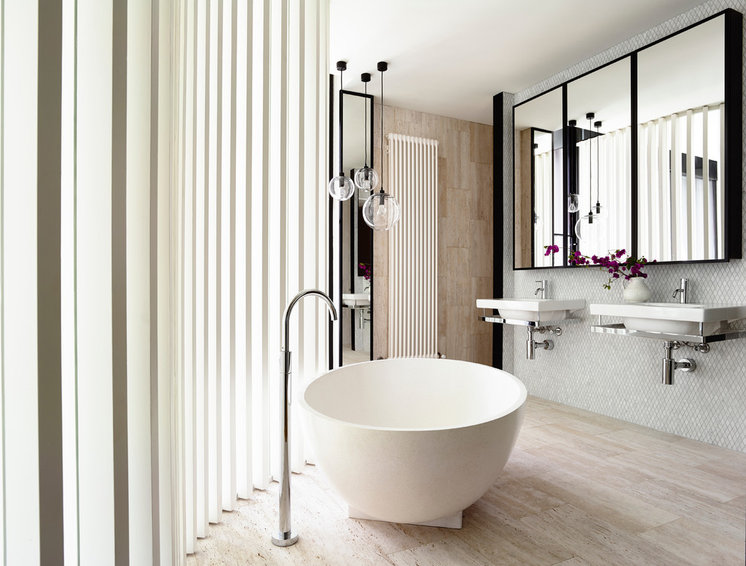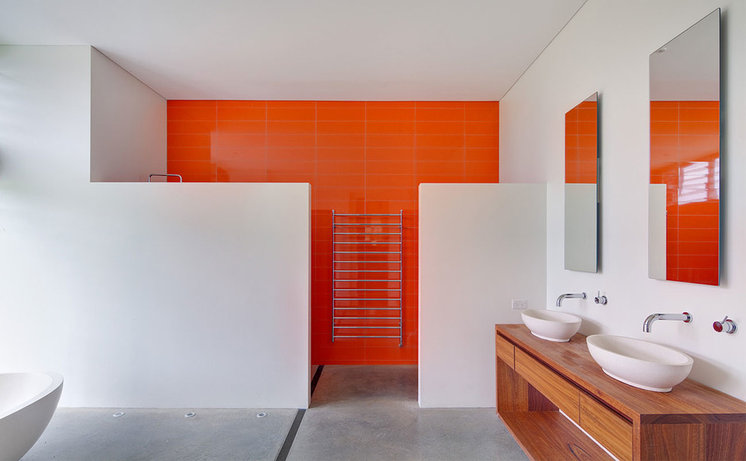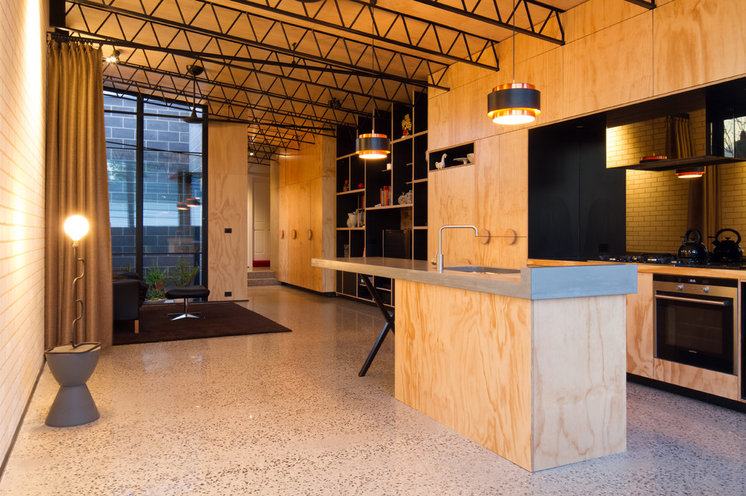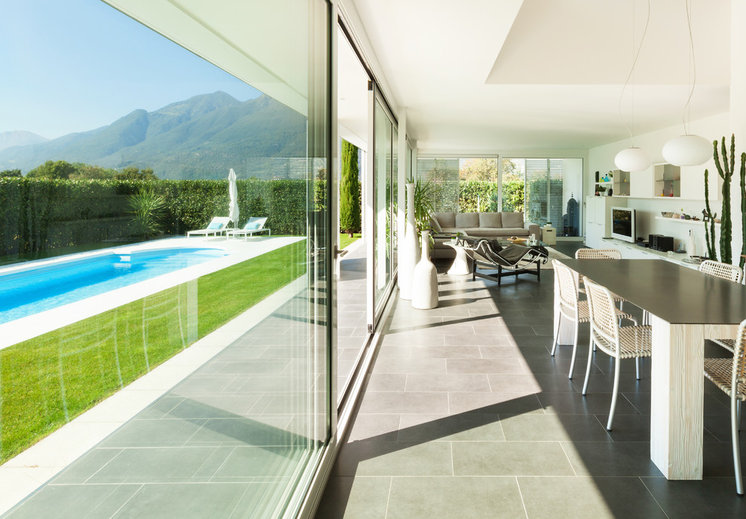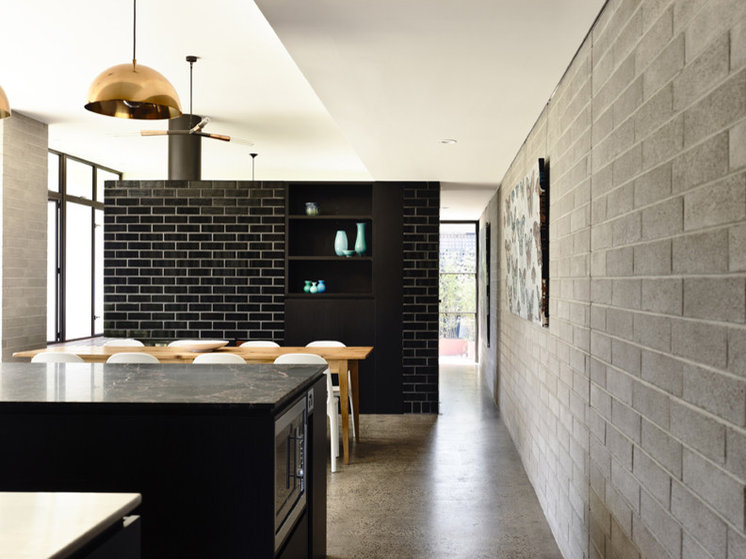Rebecca Naughtin, Houzz Contributor
As winter sets in and the temperature gauge hits a record low, we are all reminded of how important it is to have efficient heating in our homes. With so many options out there, which one is best for your project? Whether as a retrofit to an existing building or as a new build, hydronic heating could be the answer to your prayers. Let’s look at the pros and cons of hydronic heating and a few smart applications that could make it perfect for your home.
WHAT IS IT?
Considered one of the most efficient and pleasant heating sources, and seen as the norm in Europe, hydronic heating offers a constant warmth within the home without the need for intervention. Set at a comfortable temperature, it uses thermostat technology to keep the chill out of the air – recirculating hot water, either in panels or in-slab, heated by LPG, natural gas or solid fuel.
Considered one of the most efficient and pleasant heating sources, and seen as the norm in Europe, hydronic heating offers a constant warmth within the home without the need for intervention. Set at a comfortable temperature, it uses thermostat technology to keep the chill out of the air – recirculating hot water, either in panels or in-slab, heated by LPG, natural gas or solid fuel.
PROS
Anti-allergy
As there is no forced air circulation, dust and allergens are not swept through the air with the heat – and less dust means less cleaning!Efficiency
Boilers run on high efficiency, cutting your bills! Some boilers can also work as your instantaneous hot water system; this will cut the initial build cost.Silence
An advantage over most heating systems, hydronic heating is completely silent.Safe to touch
With only mild temperatures, the radiator panels are safe to touch so they are perfect for homes with children.Reliable
Effortless and reliable, the only working parts are the boiler and pump. Like any system, maintenance is important, though. The plus here is that many of the units come with long warranty periods, such as 25 years for a Bosch unit.
As there is no forced air circulation, dust and allergens are not swept through the air with the heat – and less dust means less cleaning!Efficiency
Boilers run on high efficiency, cutting your bills! Some boilers can also work as your instantaneous hot water system; this will cut the initial build cost.Silence
An advantage over most heating systems, hydronic heating is completely silent.Safe to touch
With only mild temperatures, the radiator panels are safe to touch so they are perfect for homes with children.Reliable
Effortless and reliable, the only working parts are the boiler and pump. Like any system, maintenance is important, though. The plus here is that many of the units come with long warranty periods, such as 25 years for a Bosch unit.
CONS
Price
The initial cost of installing hydronic heating is often the greatest deterrent. As the systems are becoming more popular in Australia, the price of hardware is reducing.Cost of retrofit
The cost of building work, including ripping up floors, running pipework and finishing floors, should be considered when retrofitting hydronic heating as it can all add up.Only provide heat
Unlike other systems, hydronic heating can only heat, not cool.Panels on walls
While you can place furniture against wall-mounted panels, they lose their efficiency.Response time
With up to 30 minutes response time, hydronic heating doesn’t give you that instant boost of heat you may be wanting once the system has been turned on.
The initial cost of installing hydronic heating is often the greatest deterrent. As the systems are becoming more popular in Australia, the price of hardware is reducing.Cost of retrofit
The cost of building work, including ripping up floors, running pipework and finishing floors, should be considered when retrofitting hydronic heating as it can all add up.Only provide heat
Unlike other systems, hydronic heating can only heat, not cool.Panels on walls
While you can place furniture against wall-mounted panels, they lose their efficiency.Response time
With up to 30 minutes response time, hydronic heating doesn’t give you that instant boost of heat you may be wanting once the system has been turned on.
INSTALLATION PROCESS
Radiator panels
Panels can be retrofitted to most projects with sub floor access. Pipework is threaded through the subfloor and terminated at the panel location. Fit-off of the panel is simple, however boards and flooring will need to be patched where threading pipes have become difficult and where the panels terminate. When planning panel installation, don’t forget the builders’ costs to resurface these floors. With any new build, the installation is simple.
Radiator panels
Panels can be retrofitted to most projects with sub floor access. Pipework is threaded through the subfloor and terminated at the panel location. Fit-off of the panel is simple, however boards and flooring will need to be patched where threading pipes have become difficult and where the panels terminate. When planning panel installation, don’t forget the builders’ costs to resurface these floors. With any new build, the installation is simple.
Trench convectors
This is simply a panel with a heating element that’s built into the subfloor and covered with a vent. The panel sits within a box built into the floor with plenty of clearance for air circulation. The box needs to be well insulated. The vent that covers it can be made of various materials, including aluminium or timber. If you are considering timber and you have new floors being laid, obviously choose a timber that matches. Cut into strips to form the grill, the timber will be held together by a aluminium frame.
This is simply a panel with a heating element that’s built into the subfloor and covered with a vent. The panel sits within a box built into the floor with plenty of clearance for air circulation. The box needs to be well insulated. The vent that covers it can be made of various materials, including aluminium or timber. If you are considering timber and you have new floors being laid, obviously choose a timber that matches. Cut into strips to form the grill, the timber will be held together by a aluminium frame.
Boiler unit
Similar to an instantaneous hot water unit, the boiler requires a well-ventilated outdoor area and a pump to circulate water. The location of the unit will need to comply with local government regulations, so check with your plumber or installer for the latest code. Ask your plumber or installer whether your gas supply is sufficient to power the unit, otherwise you need to consider an upgrade to your gas pipe.Thermostat
This can be installed in a single location or in several locations within the home. Once set, each thermostat control panel has its own dial to customise the heat in a room. Your installer is a specialist in creating an even heat throughout your home so once set, you may only need to make some minor adjustments to ensure you are comfortable with the temperatures that are set.
Similar to an instantaneous hot water unit, the boiler requires a well-ventilated outdoor area and a pump to circulate water. The location of the unit will need to comply with local government regulations, so check with your plumber or installer for the latest code. Ask your plumber or installer whether your gas supply is sufficient to power the unit, otherwise you need to consider an upgrade to your gas pipe.Thermostat
This can be installed in a single location or in several locations within the home. Once set, each thermostat control panel has its own dial to customise the heat in a room. Your installer is a specialist in creating an even heat throughout your home so once set, you may only need to make some minor adjustments to ensure you are comfortable with the temperatures that are set.
In slab
Slab heating can only be considered at the time a slab floor is being poured, so it is only good if you are installing a new floor. A series of high quality PE-RT (Polyethylene of Raised Temperature) pipes will be laid symmetrically over the slab, which will then be topped by a final layer of concrete. The slab is then often polished or finished with tiles, but there are also engineered timber boards on the market that do not shrink or expand when laid on heated slabs. However, check the warranty before installing. Mafi Australiahave a great range that comply.
Price
For installing radiator heating panels in a three-bedroom home, with about eight panels and good floor access, the cost would be approximately $7000 to $10,000. A new build would cost slightly less for labour. For in-slab heating, allow $60 per square metre based on 120 square metres.Summary
As a professional, I recommend hydronic heating for all of my projects. Not only is it the Rolls Royce of heating, but it’s also great for ongoing efficiency of the system and health of my clients. Should your project be a retrofitting or new, consider hydronic heating. The price may surprise you but even so, it is well worth the investment over time.
As a professional, I recommend hydronic heating for all of my projects. Not only is it the Rolls Royce of heating, but it’s also great for ongoing efficiency of the system and health of my clients. Should your project be a retrofitting or new, consider hydronic heating. The price may surprise you but even so, it is well worth the investment over time.

